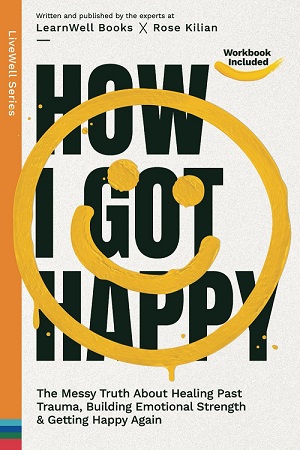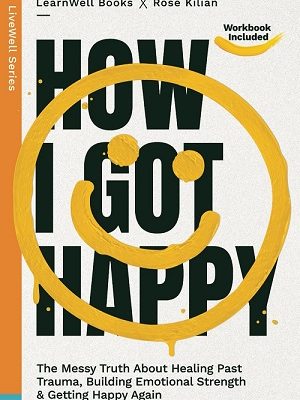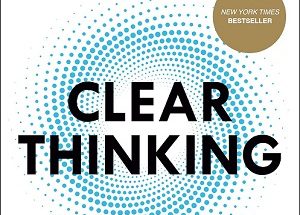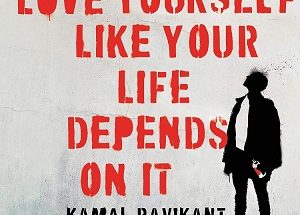The Messy Truth About Healing Past Trauma, Building Emotional Strength & Getting Happy Again
How I Got Happy by LearnWell Books is a powerful self-help guide that addresses the messy but rewarding journey of healing from past trauma, building emotional resilience, and rediscovering happiness. The book combines personal stories, actionable advice, and practical tools to help readers navigate the complexities of emotional healing and achieve lasting happiness. Below are lessons from the book:

Read: Physicians’ Untold Stories
1. Healing from Trauma is a Non-Linear Journey
One of the primary lessons from How I Got Happy is that healing from trauma is not a straightforward or linear process. Recovery involves ups and downs, setbacks, and breakthroughs. Understanding this can help manage expectations and reduce frustration during the healing process.
- Key Takeaway: Healing from trauma is a journey with twists and turns. It requires patience and self-compassion.
- Application: Be kind to yourself when setbacks occur. Understand that emotional healing is a gradual process, and each step—no matter how small—is progress.
Lesson: Trauma recovery is non-linear and requires patience. Accept that healing takes time and embrace the journey.
2. Acknowledge and Process Past Pain
The book emphasizes the importance of acknowledging and processing past trauma to move forward. Ignoring or suppressing painful experiences only delays healing. By confronting past hurts, you can begin to release the emotional baggage that weighs you down and rediscover happiness.
- Key Takeaway: You can’t heal from trauma until you face it. Processing past pain is necessary for emotional freedom.
- Application: Reflect on past experiences that continue to affect you. Journaling, therapy, or talking to a trusted friend can help you process unresolved emotions.
Lesson: Acknowledge and face your past pain to release emotional weight and start healing.
3. Emotional Strength is Built Over Time
How I Got Happy explains that emotional strength is like a muscle—you build it gradually through practice. The book encourages readers to engage in regular practices that build resilience, such as mindfulness, emotional regulation, and self-care.
- Key Takeaway: Emotional resilience isn’t something you’re born with; it’s cultivated through consistent practice.
- Application: Practice mindfulness techniques, engage in self-care routines, and learn emotional regulation strategies to strengthen your emotional muscles.
Lesson: Emotional strength is developed through consistent practice and conscious effort over time.
4. Self-Compassion is Key to Happiness
The book stresses the importance of self-compassion, teaching that being kind to yourself during difficult times is crucial for emotional healing and long-term happiness. Instead of being your harshest critic, you should be your biggest supporter.
- Key Takeaway: Self-compassion is a powerful tool for healing and happiness. Treat yourself with the kindness and understanding you would offer a close friend.
- Application: Practice self-compassion by speaking kindly to yourself, especially during moments of stress or self-doubt. When you make mistakes, forgive yourself and learn from them instead of being overly critical.
Lesson: Cultivate self-compassion to foster emotional healing and achieve lasting happiness.
5. Forgiveness is Liberating
A crucial lesson from the book is that forgiveness—both of yourself and others—is essential for emotional freedom. Holding onto anger, resentment, or guilt only prolongs suffering. By practicing forgiveness, you release negative emotions that block your happiness.
- Key Takeaway: Forgiveness frees you from the emotional chains of the past. It’s a vital step in healing and moving forward.
- Application: Reflect on the people or situations you need to forgive, including yourself. Practice letting go of resentment and guilt through mindfulness, journaling, or professional help, if necessary.
Lesson: Forgiveness is a necessary step in releasing past trauma and opening the door to happiness.
6. Happiness is a Choice and a Practice
One of the central themes of How I Got Happy is that happiness is both a choice and a practice. While life’s circumstances can affect your mood, you ultimately have control over your emotional well-being by choosing how you respond to challenges. Daily habits that support mental and emotional health are critical for maintaining happiness.
- Key Takeaway: Happiness isn’t something that just happens to you—it’s a choice you make every day.
- Application: Incorporate daily practices that promote happiness, such as gratitude journaling, meditation, and spending time with loved ones. Choose to focus on the positive aspects of your life, even when things are difficult.
Lesson: Happiness is an intentional choice that requires daily practice and commitment.
7. Building a Support System is Vital
The book emphasizes that having a strong support system—whether through friends, family, or professionals—is essential for healing and maintaining emotional health. You don’t have to go through the process alone. A network of supportive individuals can provide encouragement, perspective, and love during difficult times.
- Key Takeaway: A strong support system is crucial for emotional healing and happiness. Don’t hesitate to lean on others when needed.
- Application: Identify the people in your life who uplift and support you. Strengthen these relationships and seek help from professionals if necessary, such as therapists or counselors.
Lesson: Surround yourself with supportive people who encourage your growth and well-being.
8. Let Go of Perfectionism
How I Got Happy teaches that perfectionism is a major barrier to happiness. The constant pursuit of perfection leads to stress, burnout, and dissatisfaction. Learning to embrace imperfection and letting go of the need for control can help you live more freely and joyfully.
- Key Takeaway: Perfectionism is the enemy of happiness. Embrace your imperfections and accept that life is messy.
- Application: Challenge your perfectionist tendencies by allowing yourself to make mistakes and learn from them. Focus on progress rather than perfection in your personal growth and healing journey.
Lesson: Let go of perfectionism and embrace the messy, imperfect nature of life to find happiness.
9. Practice Gratitude to Shift Your Perspective
Gratitude is a powerful tool for shifting your mindset from scarcity and negativity to abundance and positivity. How I Got Happy encourages readers to practice gratitude daily to build a positive outlook on life, even amidst challenges.
- Key Takeaway: Gratitude can transform your perspective and lead to greater happiness. Focus on what you have rather than what you lack.
- Application: Start a gratitude journal and write down three things you’re grateful for each day. This simple practice can help shift your focus from problems to blessings.
Lesson: Practice gratitude regularly to cultivate a positive outlook and increase your overall happiness.
10. Mindfulness Helps You Stay Present
Mindfulness, the practice of staying present and fully engaged in the moment, is a powerful tool for reducing stress and increasing happiness. The book teaches that mindfulness helps you let go of worries about the future or regrets about the past, allowing you to fully experience and appreciate the present moment.
- Key Takeaway: Mindfulness helps reduce stress and allows you to focus on the present, which is key to finding happiness.
- Application: Practice mindfulness through meditation, mindful breathing, or simply paying attention to your surroundings without judgment. Use mindfulness techniques to stay grounded during moments of stress.
Lesson: Mindfulness helps you stay present, reduce stress, and appreciate life’s moments, leading to greater happiness.
Conclusion
How I Got Happy provides a roadmap for healing past trauma, building emotional strength, and rediscovering happiness. The lessons in the book emphasize the importance of self-compassion, forgiveness, and resilience, as well as the power of mindfulness, gratitude, and a strong support system. Healing is a messy but rewarding journey that requires patience, but by following these lessons, you can overcome your past and build a happier, more fulfilling life (Amazon).



